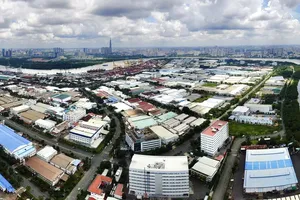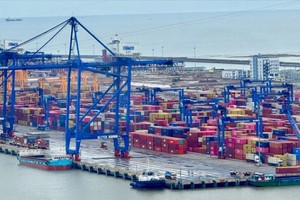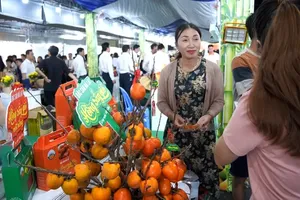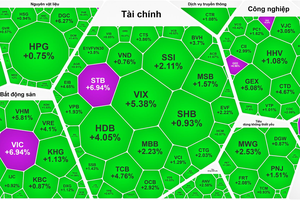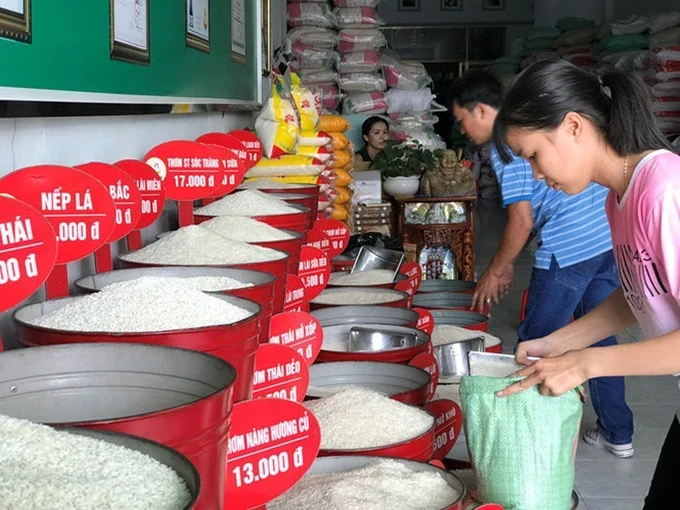
As reported by the Vietnam Food Association, on February 17, the export price of rice from Vietnam remained under US$400 per ton. In detail, the price for 5 percent broken rice was set at $395 per ton, while 25 percent broken rice was priced at $372 per ton, and 100 percent broken rice was available at just $310 per ton.
The export prices of Thai and Indian rice remain mostly above $400 per ton, making Vietnamese rice the most affordable among the world's leading exporters. Additionally, the current price of Vietnamese rice has dropped below the lowest point of the 2023-2024 period, approaching its 2022 low.
Despite the sharp decline in export prices, domestic retail rice prices remain high.
In Hanoi, a kilogram of Japanese jasmine rice costs VND22,000 while Dien Bien jasmine rice is sold at VND19,000 a kilogram and Thai jasmine rice at VND20,000. In Ho Chi Minh City, the price of American fragrant rice is at VND19,000 a kg while Nang Hoa rice price ranges from VND23,000 to VND24,000 a kg, almost unchanged from last year's peak price.
In some Hanoi supermarkets, prices for certain rice varieties have risen. For instance, Hai Hau fragrant rice grown in the Northern Province of Nam Dinh cost VND19,500 per kg before the Lunar New Year (Tet) holiday, but is now priced at VND20,500 a kg.
Agricultural expert Hoang Trong Thuy attributed the high domestic rice prices to intermediaries that have controlled the prices. He added that domestic rice prices typically require a period of 2-3 months to realign with export price trends.
Industry stakeholders have noted that rising costs associated with transportation, storage, and labor, along with losses incurred during preservation, hinder any immediate reduction in retail prices. The long-term supply contracts between supermarkets and distributors contribute to the delayed adjustment of retail rice prices.
The Ministry of Agriculture and Rural Development assessed that India's lifting of the rice export ban, along with Indonesia's trend of food self-sufficiency has strongly impacted the country's rice market in 2025. Indonesia is one of Vietnam's major export markets.
The Ministry of Agriculture and Rural Development has just sent a report to the Ministry of Industry and Trade on the forecast of the country's rice output in 2025. As per the Ministry’s report, approximately 43.14 million tons of rice will be cultivated, reflecting a decrease of 323,000 tons from the previous year. Specifically, the Mekong Delta region is anticipated to cultivate rice across 3.77 million hectares, achieving an average yield of 63.4 quintals per hectare, resulting in an output of nearly 24 million tons. After deducting domestic consumption, seeds and animal feed, the amount of commercial rice for export is estimated at 15.08 million tons, equivalent to 7.54 million tons of husked rice.
According to a recent report, the Ministry of Agriculture and Rural Development has recommended that the Ministry of Industry and Trade boost rice exports during the peak harvest months of February, March, April, July, August, and September. This proposal aims to prevent a backlog of rice supply.
At the same time, the Ministry of Agriculture and Rural Development has proposed enhancing trade promotion and expanding markets to facilitate the export of all commercial rice, ensuring a balanced distribution of benefits between farmers and enterprises.
The Ministry of Agriculture and Rural Development has also suggested implementing stricter regulations on the rice purchasing system to enhance professionalism. Specifically, it is required that traders register their businesses and enter rice purchasing contracts with farmers that specify the type and quality of rice, in accordance with agreements made with exporting companies. By adopting this model, traders will benefit from the same support policies as enterprises, which will contribute to greater market transparency, prevent price manipulation against farmers, and help maintain domestic rice prices at a reasonable level.





